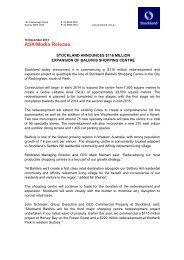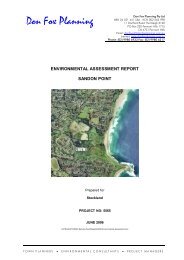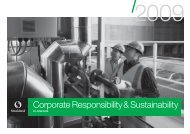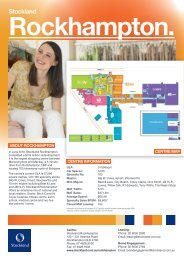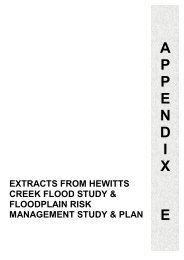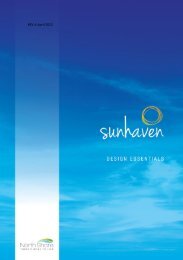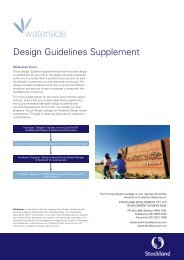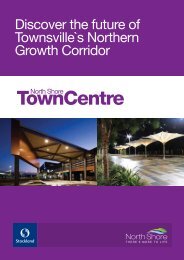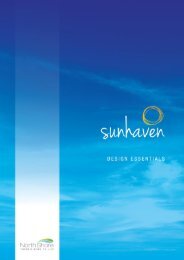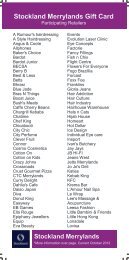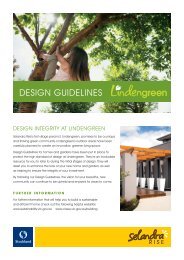Download PDF - Stockland
Download PDF - Stockland
Download PDF - Stockland
Create successful ePaper yourself
Turn your PDF publications into a flip-book with our unique Google optimized e-Paper software.
CASE STUDY<br />
Framing energy efficiency tools and policy<br />
As Australia prepares for a lower carbon<br />
future, and grapples with the security of<br />
energy supply to meet the needs of a<br />
growing population, the Council of Australian<br />
Governments (COAG) released a National<br />
Strategy for Energy Efficiency (NSEE) in<br />
July 2009. Since the release of the strategy,<br />
focus on energy efficiency has continued to<br />
grow, particularly in the wake of the deferral<br />
of the Carbon Pollution Reduction Scheme.<br />
We have been responding to the actions<br />
and intentions set out in the NSEE<br />
strategy by informing policy and helping<br />
to shape emerging, related regulation.<br />
We have also provided guidance to peers<br />
on understanding new energy efficiency<br />
and reporting compliance requirements.<br />
In particular, we have engaged with the<br />
Department of Climate Change and Energy<br />
Efficiency (DCCEE) to share our experiences<br />
on realising eco-efficiency outcomes.<br />
Distributed Energy National Forum<br />
The NSEE proposed a national forum<br />
on co-generation and tri-generation. We<br />
hosted and participated in this dialogue<br />
in June 2010. Participants agreed to<br />
expand the forum’s remit to address<br />
the challenges and opportunities with<br />
distributed energy. The forum explored<br />
existing barriers, and the work required by<br />
government, industry bodies, the property<br />
sector and the energy sector, to support<br />
widespread implementation of distributed<br />
energy solutions.<br />
We are keen to explore significant distributed<br />
energy solutions – however, we are mindful<br />
of the barriers, particularly regulation and grid<br />
connection. Our tri-generation plant at our<br />
corporate headquarters, Stockhome, was<br />
our first experience in local energy generation.<br />
The next step is to realise greater<br />
efficiencies across a group of<br />
buildings and we recognise that<br />
distributed energy supply will be<br />
key in developing future precincts<br />
and communities.<br />
National Australian Built Environment<br />
Rating System (NABERS) Retail –<br />
Energy and Water<br />
Over the past four years, we have contributed<br />
to the development of NABERS Retail<br />
by the New South Wales Department of<br />
Environment, Climate Change and Water<br />
(DECCW). We have supplied energy data<br />
to assist DECCW with benchmarking the<br />
performance of different types and sizes of<br />
retail centres. The tool was released in late<br />
2009, and we have now commenced rating<br />
our shopping centres. We anticipate that<br />
the tool will be required for future mandatory<br />
disclosure of the energy performance of retail<br />
centres. We will continue to test and review<br />
the tool and provide feedback to DECCW.<br />
A National Building Framework<br />
for Eco-efficiency<br />
A National Building Framework is being<br />
developed as a key element of the National<br />
Strategy of Energy Efficiency. The aim of the<br />
framework is to provide consistency on how<br />
buildings are assessed and rated for energy<br />
efficiency, and to set out a pathway for<br />
increasing minimum standards over time.<br />
The framework is intended to:<br />
• Apply to all classes of commercial<br />
and residential buildings,<br />
• Apply to new and existing buildings,<br />
• Address both building fabric as well<br />
as ‘hard-wired’ appliances (e.g. hot<br />
water, lighting),<br />
• Bring together assessment and rating<br />
tools for existing and new buildings,<br />
to support streamlined reporting and<br />
measurement of building performance.<br />
It is expected that the framework will be<br />
extended over time to include greenhouse<br />
gas emissions and water usage. Principles<br />
informing the framework are expected<br />
to be released later this year, while the<br />
progress of setting targets is expected<br />
to be undertaken in 2011. During this time<br />
we will continue to engage with DCCEE,<br />
particularly on establishing targets and<br />
timeframes for eco-efficiency improvements<br />
across our sector.<br />
Calling for Incentives<br />
Over the past three years, the property<br />
sector has been impacted by a wide range<br />
of energy and carbon related government<br />
policies and regulations. During this time<br />
we have welcomed the introduction of<br />
a number of grants programs, such as<br />
the Green Building Fund, designed to<br />
assist with improved eco-efficiency in the<br />
built environment. In FY10 we received<br />
$1.16 million in co-funding from the Green<br />
Building Fund for energy efficiency projects<br />
in some of our office buildings. Each of<br />
these programs has been limited in reach<br />
and application. We see that there is wider<br />
scope for more effective incentives to rapidly<br />
lift the environmental performance of our<br />
built environment. We have worked with<br />
the Property Council of Australia (PCA)<br />
and engaged with government to convey<br />
our views.<br />
Tri-generation plant, Stockhome, NSW<br />
We have continued to support the PCA’s<br />
push for accelerated green depreciation.<br />
This mechanism would enable the retrofit<br />
of existing income-earning buildings to a<br />
high environmental performance standard<br />
and bring forward the retrofitting cycle of<br />
existing stock.<br />
We have also supported the establishment<br />
of a nationally-consistent energy<br />
efficiency ‘white’ certificate scheme.<br />
This would draw together existing state and<br />
territory schemes and help deliver significant<br />
greenhouse gas emission abatement.<br />
Green doors’ would see sustainable<br />
developments prioritised for development<br />
assessment by state and local governments.<br />
<strong>Stockland</strong> Corporate Responsibility & Sustainability Report June 2010<br />
57



